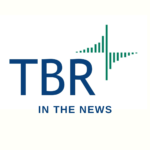With Nuance, Microsoft buys into healthcare and more
Microsoft announced its second largest acquisition in company history on April 12 with its intent to purchase Nuance Communications for $19.7 billion. Nuance’s presence in the healthcare vertical was touted as driving the move, but TBR believes much deeper and broader strategies were behind Microsoft’s decision.
Buying Nuance gives Microsoft an opportunity, but not a guarantee, to sustain growth
The announced acquisition of Nuance is the culmination of multiple elements of Microsoft’s recent performance, strategy and growth plans. On performance, Microsoft has benefitted from the COVID-19 pandemic perhaps more than any other technology vendor. Technology demands of businesses and consumers reacting to the pandemic boosted nearly all of Microsoft’s sprawling businesses, aside from an initial downturn in advertising spend that negativly impacted the LinkedIn business. From a strategy perspective, industry specialization has been a growing focus for Microsoft over the past five years, which is a shift in its mostly horizontal technology approach throughout its long history. Healthcare has been a frequent focus, but so too have retail, manufacturing and financial services specialization.
Lastly, in growth, Microsoft has been searching for the next $10 billion plus growth business. Microsoft Office 365 and Azure are clearly carrying Microsoft’s financial performance to date, but new addressable markets are needed to carry corporate growth and profitability for the next decade. While Nuance itself cannot assume that burden, the capabilities Microsoft will acquire will make many of its core technologies relevant to a much wider audience and set of use cases. In this way, the purchase of Nuance is similar to that of LinkedIn, with the full value of the investment hinging on successfully leveraging the technology to benefit as many other business units as possible.
Healthcare is large and ripe for IT investment
Unsurprisingly, healthcare has a profound impact on modern society, with an industry size to reflect that. In the U.S. alone, healthcare spending was $3.8 trillion in 2019, representing 17.7% of total gross domestic product (GDP). Furthermore, healthcare spending increased by 4.6% in 2019, a rate far outpacing growth of the overall economy.
Those facts are only part of the reason healthcare is such an attractive market for IT companies. While many verticals have fully embraced technology-driven transformation over the past decade, healthcare has been much slower to change. While technology has fundamentally changed the retail experience and business model, healthcare’s core operations and customer experience have remained much the same. Delaying this maturity in part are the strict regulations, such as the Health Insurance Portability and Accountability Act (HIPAA), which healthcare entities in the U.S. must meet, creating substantial risk for any IT budget decision makers planning to modernize their environments with cloud, let alone pursue innovative technologies such as IoT to improve the care they provide to patients.
There are glimmers of promise that the healthcare vertical is ready to begin transformations driven by increased technology adoption. Part of the shift is a generational change in doctors and providers. The influence that doctors have within the healthcare industry is one of the attributes that makes the healthcare vertical unique. Generational change among the physician ranks is having an outsized impact on the acceptance of technology within healthcare, but that is only one of the factors pointing to an increase in technology adoption.
Outside of shifting perception, the impact of COVID-19 has forced hospitals and patients alike to embrace solutions that have been around for years but are now a necessity to maintaining the patient-doctor relationship and safety, such as telemedicine. And with all major cloud technology providers offering HIPAA compliance, along with an ecosystem of partners that can leverage those delivery platforms, the aforementioned regulatory requirements are now less of a barrier in slow technology adoption.




Leave a Reply
Want to join the discussion?Feel free to contribute!